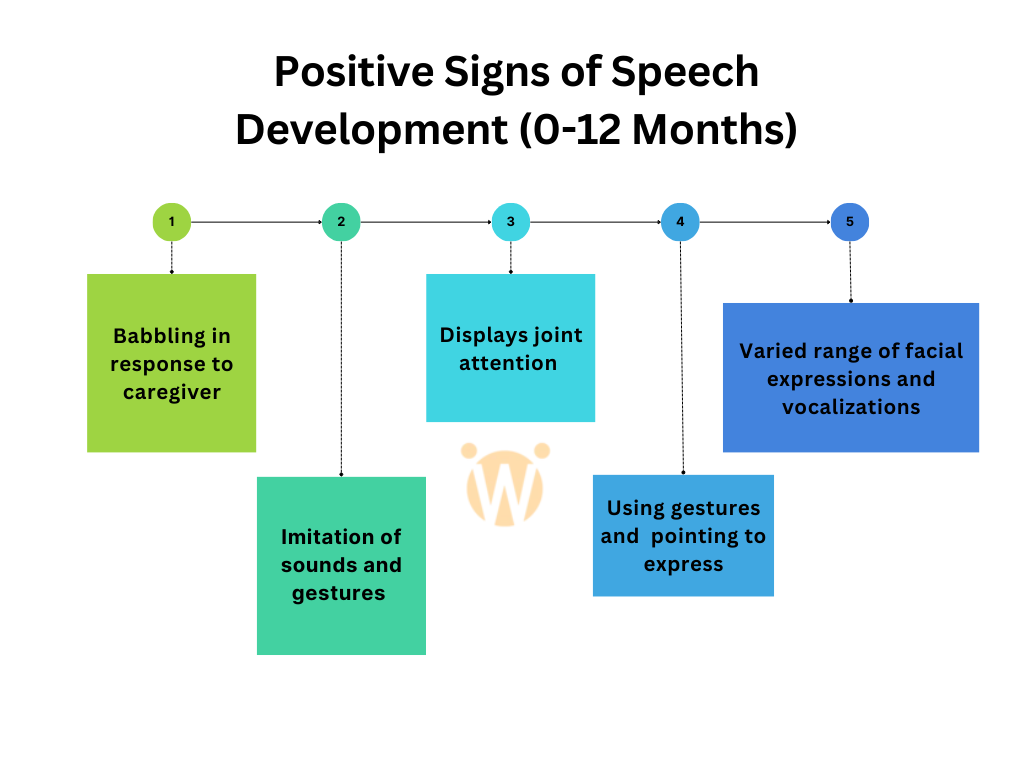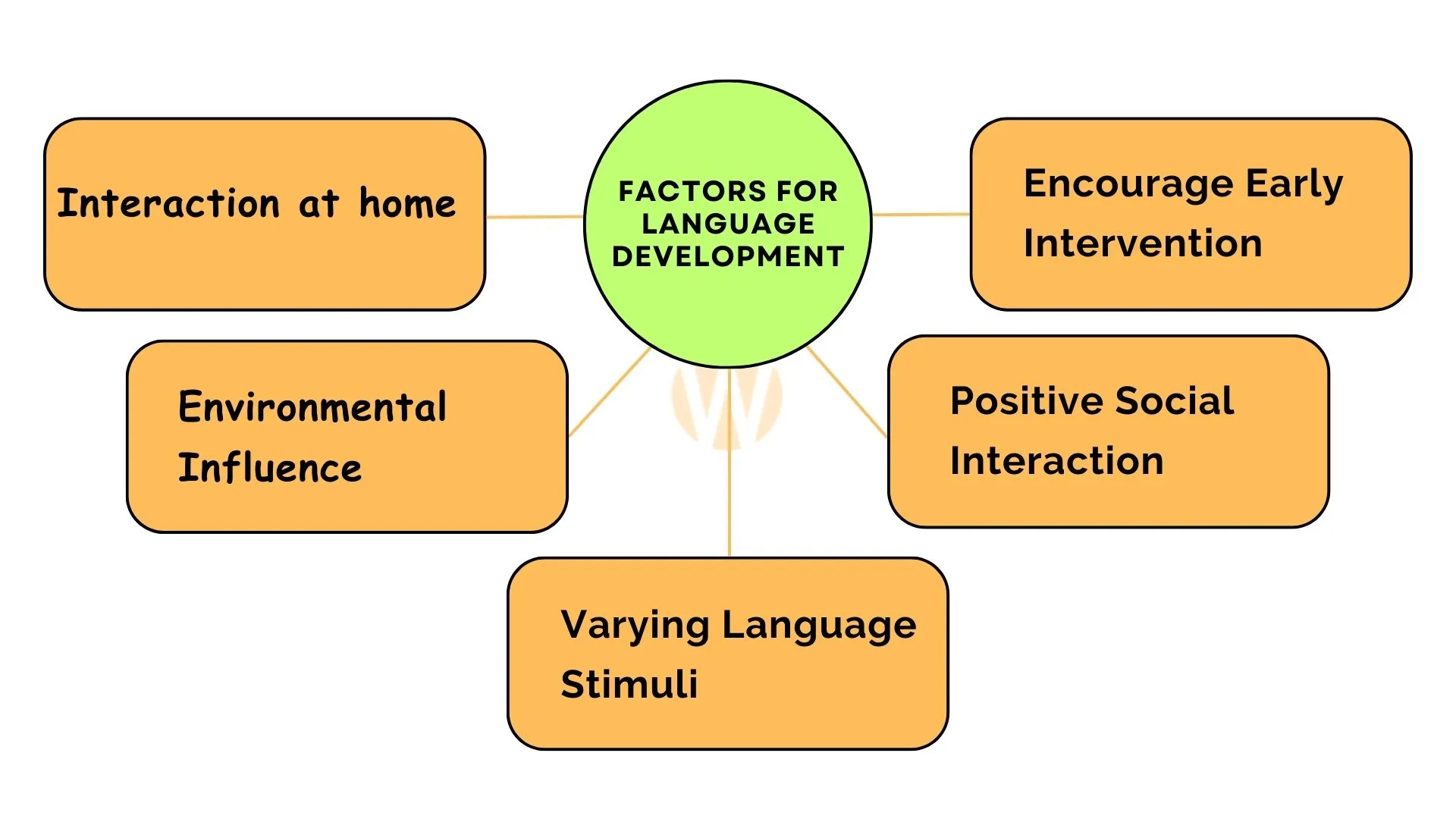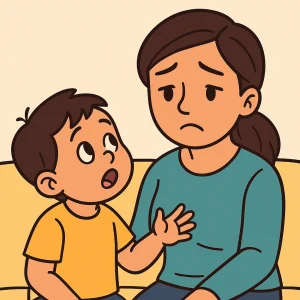Speech and Language Milestones: 0 to 12 Months
By Wellness Hub
Last Updated: October 24, 2023
Every child is a bundle of joy for the parents. From the moment they are born, babies try to absorb what is in their environment. With their incredible transformation from the month of their birth till one year of age, babies amaze us with their brilliance. Babies start to respond by turning their heads, moving their eyes, cooing, and smiling when they hear someone and identify some known faces. All of these responses indicate they are progressing. It is important for parents and caregivers to proactively observe these speech and language milestones.
From birth to 3 months of age
Though the majority of their time is spent sleeping, drinking milk from the mother, and crying, babies in their initial months have a memory of their womb life. They are aware of different sounds they heard so far like the sounds of the mother’s heartbeat, abdomen, and bowel noises, pulsations of arteries present, and so on. They can differentiate from the voices they hear to the sounds being near to their mother. Hence doctors suggest having the babies cuddled up for much of the time during their initial months, to reduce that separation anxiety with the mother. This increases a sense of safety and security in them.
In the first few months, babies try to get engaged with all the sounds around them. They try to recognize familiar voices, especially that of their primary caregivers. The responses they give during the initial months are a symphony of smiling, babbling, and cooing. They try to produce soft vowel-like sounds. These early vocalizations lay the groundwork for their future speech skills.
Also read: Breaking Down Natural Language Acquisition for Beginners
Though crying is their main mode of communication, from the initial days the baby is born till three months of age, the baby exhibits the following
| Receptive language | Expressive language |
| Startled response to loud sounds | vowel-like sounds such as “ooh” and “aah” |
| Recognizes familiar voice | Has a “special” cry for hunger. |
| Often looks at the speaker’s face and responds by smiling | Coos and babbles at known people |
| Regularly localizes speakers with eyes | When played with laughs, and uses vocal expressions of pleasure. |
| Often looks at speaker’s face and responds by smiling | Plays with tongue |
From 3 months to 6 months of age
Once the baby turns 3 months of age, you can observe many developments in growth. The eyesight becomes clearer and the baby can now see farther than before. The hand’s grip gets stronger than before. Whether it’s the dad’s glasses or watch, mom’s hair or dress, the grab of your baby’s palm and fingers cannot let anything escape easily.
The baby will now specifically look for an eye-contact and smile. This is the initial non-verbal social interaction babies try to form for proximity. Their babbling gets louder and playing with saliva of the mouth would be a normal routine. You can also observe your baby calming down in response to your voice.
You can observe the following developments in their language skills.
| Receptive language | Expressive language |
| Turns head deliberately toward the source of the voice | Often laughs during play with objects. |
| Usually frightened or disturbed by angry voices. | Babbles with repetitive consonant-vowel combinations such as pa-pa, ma-ma, ba-ba. |
| Regularly localizes source of voice with accuracy | Enjoys vocal play |
| Recognizes or responds to his/her own name | Takes the initiative in vocalizing and babbling directly to others. |
| Appears to recognize words like “daddy”, “bye-bye”, “mama”, etc. | Plays at making sounds and noises while alone or with others. |
Around three months of age, your baby gets expressive and starts to experiment with a variety of sounds. Laughter, squeals, and babbling become more frequent. They also start to respond to their names and simple commands, indicating an early understanding of language. By six months of age, most babies can recognize the tone of their caregiver’s voice. Their babbling would also get repetitive with consonant-vowel combinations (e.g., “ba-ba” or “ma-ma”). This marks the beginning of intentional communication.
From 6 months to 9 months of age
By six months of age, your baby will become more mobile! Babies respond to sounds and name calls by turning their head. They can now see the world around them in three dimensions. Turning, rolling, and crawling will slowly develop during this phase. If the baby tries to chew on everything and salivates more than before, it is a sign of their first teeth appearing soon!
They become more observant of the sounds around them. Your baby can understand the difference between your soft welcoming voice and your harsh daunting tone. They can clearly understand the meaning of a waving hand. It is common for parents and relatives to feel stunned when the baby cries if you try to wear your shoes as a sign of going out.
So, here are the prominent speech and language developments of this age:
| Receptive language | Expressive language |
| Appears to recognize names of family members and some common objects | Makes double syllable sounds (ma-ma, ta-ta, da-da) |
| Responds with appropriate gestures to such words as “come” “up” “bye-bye” etc | At least half of the time responds with vocalizations when called. |
| Gives some attention to music or singing | Babbling becomes complex with a variety of sounds |
| Regularly stops activity when his or her name is called. | Often mimics the sounds and number of syllables used in vocal stimulation by others |
| Regularly stops activity in response to “no”. | Uses some gesture language (such as shaking head appropriately for “no”, etc) |
Around 6 months of age, babies refine their vocalizations, incorporating more consonants and varied intonations. They might even mimic the rhythm and cadence of adult speech, displaying signs of a growing awareness of communication patterns. Your baby would also try to understand some basic words, like “bye-bye” or “milk.” This is the beginning of their receptive communication, both verbal and non-verbal.
From 9 months to 12 months of age
It is mostly around nine months of age, you may find your baby calling you with recognizable words like “ma-ma” and “da-da”.
However, it’s crucial to note that there’s a wide range of normal development, and not all babies hit this milestone at the same time. By one year, many babies can comprehend simple commands and may respond appropriately. They also start using gestures to communicate, like pointing to objects of interest or shaking their heads to indicate a “no.” This combination of words and gestures enhances their ability to convey needs and wants.
The progress of a child’s typical development is clearly indicated by these speech and language milestones.
| Receptive language | Expressive language |
| Appears to enjoy listening to new words. | Speaks 1st words often (“dada”)”mama”, “bye-bye” or the name of pet or a toy. |
| Occasionally follows simple commands like “ put that down” | Often uses jargon (short sentences like utterances of 4 or more syllables without true words. |
| Appears to understand simple questions like “Where” is the ball?” | Initiates speech gestures, games like “pat-a-cake” or “peek-a-boo” |
| Demonstrates understanding by responding with appropriate gestures to several kinds of verbal requests | Occasionally tries to imitate new words. |
| Demonstrates understanding by making appropriate verbal responses to some requests (for ex: say “bye-bye”). | Uses 3 or more words with some accuracy. |
Many children start walking around one year of age. While babies weighing less would find it easy to walk even before one year, the ones who are slightly heavier postpone their walking till they cross 14 months of age.
Cultivating Healthy Development

Considering speech and language development in children, here is a list of positive signs of speech development in children from 0 to 12 months of age.
- Babbling in response to the parent or caregiver when engaged
- Imitating or mimicking sounds and gestures
- Displaying joint attention by looking at an object and then at the caregiver to check if they are also observing
- Showing a varied range of facial expressions and vocalizations
- Using gestures and pointing to things as an expression of interest
Though individual responses might vary, these are the general milestones to check if the baby is trying to be communicative. If there are any concerns, it is always advisable to consult a primary healthcare provider.
Crucial Factors for Language Development

There are many crucial factors that foster language development in children. All these play a very important role in initiating the receptive and expressive language skills of an infant.
Interactions at home:
From the initial months, as parents or caregivers talk and sing to them, the receptive skills develop. As they grow, babies try to imitate the movement of the lips and jaw of their elders and learn to produce sounds. Even during their early childhood, the habits of making conversations, singing, and reading would expose them to various language patterns and vocabulary.
Environmental influences:
Having a healthy environment that fosters communication is essential for a child’s speech and language development. Exchanging conversations and being exposed to multi-lingual environments households may show early signs of language acquisition.
Variances:
There can be variances from one child to another, depending upon the mother’s health during pregnancy, premature birth, or any other predisposed genetic factors that can influence a child’s speech and language development. As babies strengthen their control over their motor skills, their ability to vocalize can also improve. Anyhow, each child is unique and their developmental milestones vary.
Social interactions:
As it is very well known, man is a social animal. Even as a baby, a human being learns from the environment around them. Having good face-to-face conversations, positive interactions and social experiences can contribute to language development. The coronavirus pandemic, in the recent past, has proved this to many of us.
In case of any doubts or concerns, it is recommended to consult a professional. Early intervention can be crucial in addressing any potential challenges and ensuring children reach their full communicative potential. Wellness Hub offers a group of specialized, experienced, and empathetic speech and language pathologists who can provide therapeutic support for your child’s speech needs. Explore our convenient option of Online Speech Therapy for Children to access expert assistance from the comfort of your home.
Book your Free Consultation Today
Parent/Caregiver Info:
Client’s Details:
* Error Message








